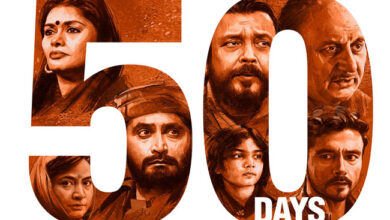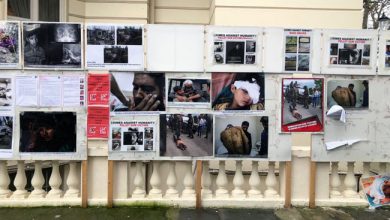Human Rights Violations in Kashmir: Past & Present

By Qasim Swati (United Kingdom)
Having a total area of 222,236 square kilometres (85,806 sq mi), Kashmir, historically, is referred to the Kashmir Valley, but, today, it denotes such areas, as the Indian-administered State of Jammu and Kashmir (consisting of Ladakh, the Kashmir Valley and Jammu), Azad Kashmir and Gilgit-Baltistan (Pakistan-administered territories) and the regions of Aksai Chin and the Trans-Karakoram Tract/Shaksgam or the Shaksgam Tract (administered by the People’s Republic of China).
Despite its unique geographical position, fame and importance in the world, the people of Kashmir have been victims of various atrocities, persecutions and other human rights abuses and violations in the past and are still experiencing the same. Several religions, like Hinduism, Shaivism (one of the major traditions within Hinduism that reveres/respects Shiva as the Supreme Being), Buddhism, Islam, Jainism, Sikhism and Christianity, have flourished on the earth of Kashmir, from time to time. Believers and followers of some of these religions have taken control of Kashmir on various occasions, but none of its rulers, attackers/invaders, predators and administrators has proved to be good, nice and kind to the people of Kashmir, because they have abused, wronged and tortured the people of Kashmir for their own vested interests in some way.
Rajatarangini (meaning ‘The River of Kings’) is a metrical legendary and historical chronicle (a factual written account of important or historical events in order of their occurrence) of the north-western Indian sub-continent, specifically, the Kings of Kashmir/a history of Kashmir, written by a Kashmiri historian (Kalhana) in Sanskrit in the 12th century CE.
There is a huge list of the Kings of Kashmir in the Rajatarangini, with Gonanda I (the First King of Kashmir) who ascended the throne in 653 Kali calendar era, or 2448 BCE. Abisares (or Abhisara) ruled over Kashmir during 326 BCE. Kashmir became a part of the Maurya Empire during the reign of Ashoka (304 – 232 BCE).
Kashmir was conquered by Kanishka (127 – 151 CE), an emperor of Kushan dynasty. White Huns/Hepthalites (the people lived in Central Asia during the 5th to 8th centuries) took over many parts of India, including Kashmir, under Toramana. Kashmir came under the control of Karkota Empire (a major power in the Indian sub-continent during 7th and 8th centuries), in eighth century.
After Karkota Empire, Avantivarman founded Utpala dynasty and ruled Kashmir from 855 to 883 CE. A descendant from the Hindu Shahis (879 – 1026, one of the last Hindu dynasties in Afghanistan) of Kabul on her mother’s side, Queen Didda, became the Queen of Kashmir in second half of the 10th century. When Queen Didda died in 1003 CE, Kashmir came under the control of the Lohara dynasty (Hindu rulers of Kashmir from Khasa tribe, in the northern part of the Indian sub-continent, between 1003 and around 1320 CE).
Founded by Shams-ud-Din Shah Mir, Shah Mir dynasty ruled over Kashmir from 1339 till 1561. This period of time is also known in history as ‘Kashmir Sultanate (1346 – 1580s). Then, Mughals/Moguls took over as rulers of Kashmir from 1580s until 1750s. Here, we should not forget about the Afghan Durrani Empire, controlling Kashmir from 1747 until 1819, as Muslim rulers.
Kashmir also saw the Sikh Rule (1820 – 1846) when this region of the world came under attacks by conquering armies of the Sikhs, led by Ranjit Singh of Punjab (the leader of the Sikh Empire). Nevertheless, the Battle of Sobraon (part of First Anglo-Sikh War) fought on 10 February, 1846 between the forces of the Sikh Khalsa Army and the East India Company, that resulted in the complete defeat of the Sikhs.
The Princely State of Kashmir and Jammu (as it was referred to so at that time) also experienced the Dogra Rule (1846 – 1947) under Royal Dogra dynasty, founded by Maharaja Gulab Singh Jamwal (1792 – 1857), who was a Hindu by religion.
The people of Kashmir have been tortured and persecuted by, almost, all these rulers in different ways. Whether these rulers were Buddhists or Muslims, Sikhs or Hindus, but most of them have abused and violated human rights in Kashmir in one way or another.
For example, the Kashmiri people suffered due to corruption, rise of feudal lords, internecine (destructive to both sides in a conflict) fights and oppressive taxation during the rule of the Lohara dynasty (1003 – 1320 CE).
Similarly, Siknadar Shah Miri/Sultan Sikandar (commonly known as Sikandar But-Shikan) [1389 – 1413 CE) was the sixth sultan or ruler of the Shah Mir dynasty of Kashmir, who forced conversions to Islam, obtained the title “But –Shikan” for destroying idols and imposed taxes on non-Muslims.
When Mirza Muhammad Haidar Dughlat (a Mughal/Mogul army general and member of ruling family in Kashgar) attacked Kashmir in about 1540 CE, on behalf of Emperor Humayun, so many human rights violations took place in Kashmir, like persecutions of Shia Muslims, Shafi’is (one of the four schools of Islamic law in Sunni Islam) and Sufis (followers of Islamic mysticism, “the inward dimension of Islam” or “the phenomenon of mysticism within Islam”.
Likewise, Mughal/Mogul ruler, Muhi-ud-din Muhammad Aurangzeb Alamgir (1618 – 1707) is criticised for his policies of discriminatory taxation and religious intolerance after her came into power in 1658 CE.
The Afghan Durrani Empire/Sadozai Kingdom or Afghan Empire ruled over Kashmir for several decades (1747 – 1819), mainly from 1752 – 1819 when Abdullah Khan Isk Aquasi/Ishaq Aqasi (a commander of Ahmad Shah Abdali) brought an end to Mughal Rule in Kashmir. However, the Afghan rulers in Kashmir did not treat Kashmiris in a way hoped and expected by the people of Kashmir. Instead, the Kashmiri people experienced high taxation, oppression and maltreatment at the hands of their indifferent, brutal and cruel Afghan governors.
The Sikh rulers were warmly received and welcomed by the Kashmiris, as a result of suffering under the Afghan Rule, but the Sikh Rule emerged/proved to be more oppressive and even worse than their Afghan predecessors. They introduced and imposed several anti-Muslim laws, including handing death sentences for cow slaughter, banning the Azaan/Adhan/Adhaan (the public Muslim call to prayers) and closing down the Jamia Masjid in Srinagar. During the Sikh Rule, the Muslims of Kashmir, specifically, the Muslim peasantry suffered a lot economically and socially, along with imposition of unreasonably high taxes.
After the decline of the Sikh Rule in Kashmir, the advent or arrival of the Dogra Rule (1846 – 1947) was also not a good omen for the Kashmiris. This Hindu rule was extremely oppressive towards the Muslims (being in a majority) in the Princely State of Kashmir and Jammu, as they had to face discriminatory laws, experience unpaid forced labour and pay high taxes. A Hindu elite used to abuse, exploit, persecute and torture Muslim peasants. These poor Muslims suffer a lot at the hands of their Hindu masters and bosses. The anti-Muslim policies of Dogra rulers forced a large number of Kashmiri Muslims to migrate from the Valley of Kashmir to Punjab, as there was not enough food for them nor were there any other basic facilities of life available for them in Kashmir.
In the same way, the people of Kashmir have been suffering for the last more than 72 years since the partition of the Indo-Pak sub-continent in 1947 until 2019. So many human rights abuses and violations have taken place at the hands of the Indian security forces in the Indian-administered Kashmir. The various human rights abuses and violations, committed in the Indian-occupied State of Jammu and Kashmir by the state and non-state actors, include suppression of freedom of speech; political repression, house arrests of anti-government political leaders and other influential people in the area; rape and sexual abuses; both mental and physical torture of Kashmiri people; extra-judicial killings; forced/enforced disappearances; targeting human rights activists and journalists; destruction of properties and homes; the arson attacks on schools and other such facilities; blockades and connections of communication and other basic human amenities; continuous curfews in the region; the killings of innocent civilians; the use of lethal and dangerous weapons against protestors, like the pellet-firing shotguns; the presence of mass and unmarked graves, and the lack of justice for the victims of the perpetrators, among others.
There are also some concerns and reports of human rights abuses in the Pakistani-administered areas of Azad Kashmir and Gilgit-Baltistan, where the majority of people are Muslims. However, the human rights violations, conducted in the Pakistani-administered Kashmir, are not as serious and huge as those done in the Indian-administered part of Kashmir.
Qasim Swati is a freelance journalist, writer and human rights activist, based in the UK, and can be reached at qasimswati.com or info@qasimswati.co.uk.





